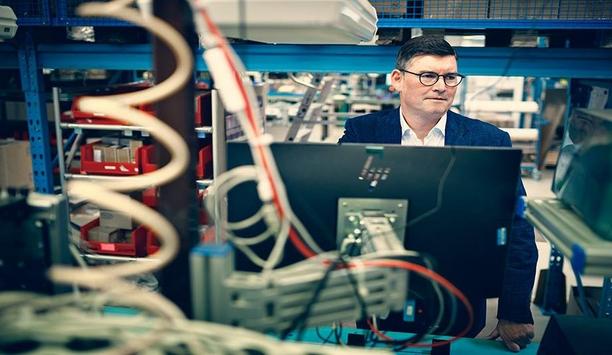Poor indoor air quality (IAQ) has been a longstanding problem within educational institutions, where it has been known to affect productivity and performance, as well as mental and physical health. And it’s not just the pupils at risk, with studies finding that this deleterious phenomenon can also compromise teaching performance and delivery, which inevitably affects the quality of the information received.
CO2 concentrations
This has recently been evidenced in a study conducted by the University of New South Wales Sydney’s School of Built Environment, which found that CO2 concentrations in classrooms far exceeded the 850-ppm permitted.
It highlighted that, in addition to significantly lowering concentration and attentiveness, this undesirable situation was raising the concentration of other harmful contaminants and VOCs from building materials, furniture, and cleaning product residue.
Poor ventilation
The situation was further exacerbated by higher than average indoor air temperatures
They also highlighted that the situation was further exacerbated by higher than average indoor air temperatures, which, in addition to poor IAQ, are caused by poor ventilation.
While it’s acknowledged many factors contribute to slower development in pupils, I don’t think it’s unfair to single out poor IAQ as one of them. The good news is that it’s also one of the easiest ones to redress.
Adopting a natural approach
Until recently, it was often assumed, incorrectly, that fully mechanical HVAC provided the best option to ensure optimal ventilation.
However, with perceptions around climate change shifting, and the realization that these systems are particularly carbon-intensive, many have started to question whether it’s wise to remove CO2 from a building’s interior while also creating more of it in the process. It became like robbing Peter to pay Paul.
Low-emissions
Those involved in the design, and build of educational institutions turn toward natural ventilation
Certainly, it’s a view gathering more momentum in the specification community, particularly for commercial and public buildings where green targets are regularly a compulsory requirement of the design brief.
This is encouraging more of those involved in the design, build, and retrofitting of educational institutions to turn towards natural ventilation to provide an effective solution to the IAQ conundrum, while also delivering on low-emission stipulations. It’s something HVAC professionals should take careful note of.
A smarter system
Whilst many reading this will be aware of how natural ventilation systems work. They might be less familiar with how these systems have evolved over the past decade to compete like-for-like with their mechanical counterparts. They are starting to outstrip them in terms of performance and cost, both carbon and financial.
What’s made this possible is the rapid evolution of AI technology, which has transformed the natural ventilation sector to make it truly competitive within the HVAC marketplace.
Smart sensors
It means that the best of both worlds can be achieved, better IAQ and lower environmental damage
Now, natural systems can be equipped with smart sensors, linked to a building management system, and automated to respond to climatic and meteorological conditions. This controls the circulation of natural, not recycled, air, delivering optimal ventilation which reduces CO2 rather than adding more.
Crucially, it means that the best of both worlds can be achieved, better IAQ and lower environmental damage. For schools, pupils and teachers alike can breathe easy in the knowledge that they are working within a safe, comfortable, and sustainable classroom.
A holistic approach
However, natural ventilation, as effective as it is, is not the full picture. As UNSW’s research found, emissions from building fabric, furniture, and other organic and artificial VOCs still pose a hazard, even in the airiest of environments.
As such, it’s important to limit risk by installing natural ventilation systems in conjunction with other design principles which encourage sustainability and wellbeing.
Eco-Schools Programme
A holistic approach is adopted in the education sector, with more schools planned in line with Net Zero targets
We’re seeing this holistic approach being adopted with gusto in the education sector, with an increasing number of schools planned, designed, and built to low carbon standards, in line with Net Zero targets. The Eco-Schools Programme is one excellent example, showing how students and teachers are collaborating to encourage more sustainable learning environments.
This has led to a rising stakeholder interest in passive and natural fixtures, fittings, and finishes, and it’s in the interests, both compassionately and commercially, of built environment professionals to respond with greener specification choices. Natural ventilation is, well, a natural choice to meet this increasing demand.
A grade air quality
In the HVAC community, the winds of change are gusting all around us, and the education sector is providing an excellent example of how optimal IAQ is becoming a priority while being delivered sustainably. Following two torrid years where COVID-19 seriously affected the learning and development of a generation, there’s a strong imperative, to ensure the environment they return to is as safe and comfortable as possible.
Likewise, it should be a sustainable one. Natural ventilation delivers on both counts. Not only can these low impact, low emission, and low energy systems make poor IAQ a thing of the past, but they will help to improve the quality of education by providing a comfortable and conducive environment for academia to flourish.





















